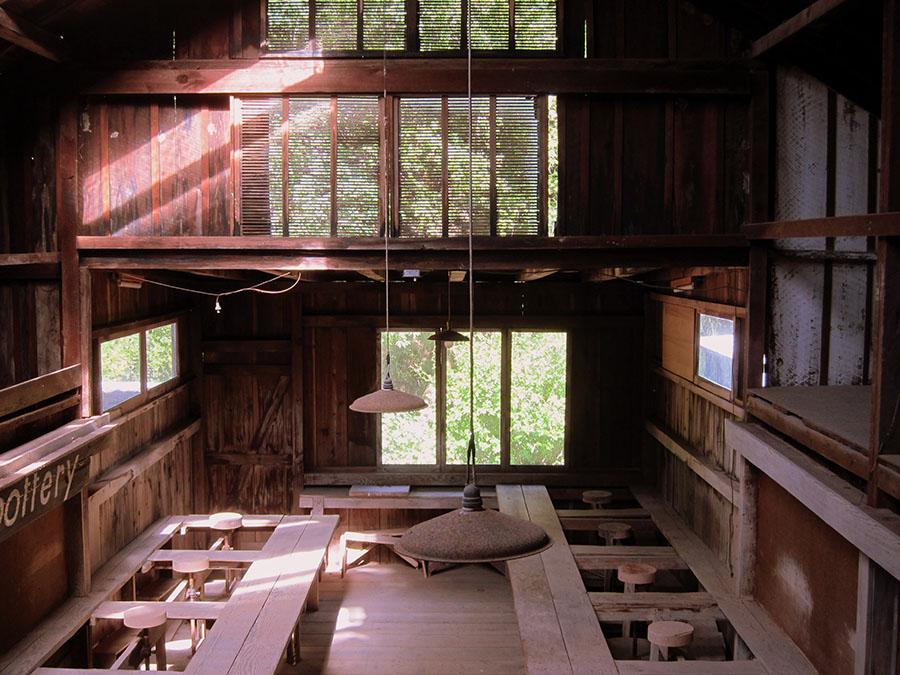
Historic Artists' Homes and Studios (program of the National Trust for Historic Preservation) has accepted four new sites in to the program. Each of these sites is the preserved home and studio of a significant American women artist, and is open to the public.
HAHS is deeply committed to representing the full breadth and diversity of our country’s artistic legacy through preserved places nationwide. The sites selected also capture the spirit of the National Trust’s larger initiative, Where Women Made History, a national campaign to identify, honor, and elevate places across the country where women have changed their communities and the world. With the recent centennial celebration in 2020 of the passage of the 19th amendment that granted women the right to vote, it was an important moment for HAHS to increase its representation of sites dedicated to the legacy of women artists. With the addition of these four sites, HAHS is proactively ensuring that it will tell a fuller story of those artists who have traditionally been underrepresented for their contributions to our cultural heritage including people of color, indigenous, self-taught, and women artists.
“These sites preserve the complex stories of four women artists who were groundbreaking in art and arts education, each contributing not only through their own artwork, but through the mentorship, opportunity, and influence they provided to younger and upcoming artists,” said HAHS Senior Program Manager, Valerie Balint. “By placing these women’s inspiring stories at the forefront, HAHS and the National Trust are helping to fulfil a vital need for more gender equity in how we frame artistic heritage and hierarchy. We will continue to expand the membership in 2021 to bring on other sites whose compelling stories increase racial diversity and social equity.”
The introduction of these four new sites also increases the geographic representation of HAHS to include 22 states in the nation and expand the portfolio of twentieth-century sites within the network, creating a rich and balanced representation of nineteenth-century artist spaces.
The four new members of HAHS are:
Hillltop House, the artist-designed house, landscape, and sculpture park of ceramicist, sculptor, author and preservation activist Dorothy Riester (1916—2017) in Cazenovia, New York (Click Here to read a feature story on Dorothy Riester and her property);
The Victor D’Amico Institute of Art, the Long Island home, and retired Navy barge that artist couple Mabel D’Amico (1909—1998) and Victor D’Amico (1904—1997) transformed into an arts school to advance their philosophies of progressive arts education;
Pond Farm, the art colony in California’s Russian River Valley, founded by author, influential ceramicist and Bauhaus-trained potter, Marguerite Wildenhain (1896—1985) and;
Saarinen House, the iconic modernist home on the campus of Cranbrook Academy of Art (in Bloomfield Hills, Michigan, that was designed and furnished by artist couple, textile designer and sculptor Loja Saarinen (1879—1968) and architect and painter Eliel Saarinen (1873—1950).
Read here what leadership at these sites have to say about becoming part of the program:
Sarah Tietje-Mietz, director of Hilltop House, says, “Having Dorothy’s creative life examined as part of the larger dialog of artists’ homes and studios will develop a more profound understanding of the importance of a life lived in art —especially one lived by a 20th century woman artist. We are honored and beyond excited to be part of a community that both celebrates the range of environments shaped by artists and challenges itself to expand the traditional notions of historical importance."
Christopher Kohan, president of the Victor D’Amico Institute of Art, says, “Our inclusion in HAHS reinforces an enduring mission pioneered by Mabel and Victor D’Amico to advance art and creative education as a human necessity. The preservation of diverse historic structures and artistic legacies is an invaluable gift to this country and confirms Mabel and Victor’s belief that ‘the arts are a humanizing force and their major function is to vitalize living.’”
Michele Luna, executive director of Stewards of the Coast and Redwoods, “Stewards of the Coast and Redwoods and California State Parks is honored to be accepted into the Historic Artists' Homes and Studios network. This designation is especially meaningful during a year when the Walbridge fire swept through Austin Creek State Recreation Area where Pond Farm is located. Due to the dedication of our State Park partners who impressed upon fire fighters the importance of saving this historic site, Pond Farm was saved.”
Gregory Wittkopp, director of Cranbrook Center for Collections and Research, says “My colleagues and I at Cranbrook are honored by this opportunity, one that will not only help us share the story of Saarinen House and the makers that lived and worked there with curious people from around the world, but also help us foreground the story of Loja Saarinen, who is often overshadowed by her husband, the architect Eliel Saarinen.”
Image: Interior of Pond Farm Barn, Pottery Studio, 2016




